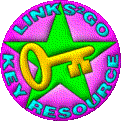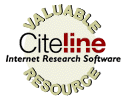|
Home,
Search,
Index,
Links,
Pathology,
Molecules,
Syndromes, Muscle, NMJ, Nerve, Spinal, Ataxia, Antibody & Biopsy, Patient Info |
|
We make no claims concerning the validity of the information provided herein. We will not be held liable for any use thereof. Copyright Notice: © 1995-2025 Alan Pestronk. All rights reserved. Documents, including HTML text files, and graphics at this website (https://neuromuscular.wustl.edu), may only be reproduced in any form or by any means in whole or in part with written consent of Alan Pestronk. Printed text may be used for non-commercial paper-based distribution with attribution. |
|
Continuum
1 |
|
|
MD NetGuide |

|
|
NEURONLINE JNNP 2003;74:93 |
|
| Merlot |

|
|
Study Web Featured Site |

|
|
eMedical Australia |

|
|
Medical Resource Reviews Database 4/4 Rating |

|
|
Nature Reviews Recommended |

|
|
|
|
| med411 Award |
|
|
Links2Go Key Resource Neuroscience Topic |

|
|
NetWatch Science Jan 21, 2000 vol 287 |

|
|
Neuromuscular Web Site Review Neurology 1999;53:41 |
|
|
"Most Useful Child Neurology Sites" Child Neurology Home Page |

|
|
BioMedLink |
|
|
Medical Matrix |
|
| An Editor's Choice at Looksmart |
|
| A Best Bet in Neurosciences on the Internet |

|
|
A Web Pick of the Day at HMS Beagle |
|
|
HealthAtoZ |

|
| "Neurologists are actually using it." |
Michael H. Brooke, MD, The Electronic Journal, Neurology 1999;52:4-5 |
| Valuable Resource at CiteLine |

|
| Web Site of interest to Neurologists |
Busis N, & Honig LS, Archives of Neurology 1999;56:1335-1337 |

